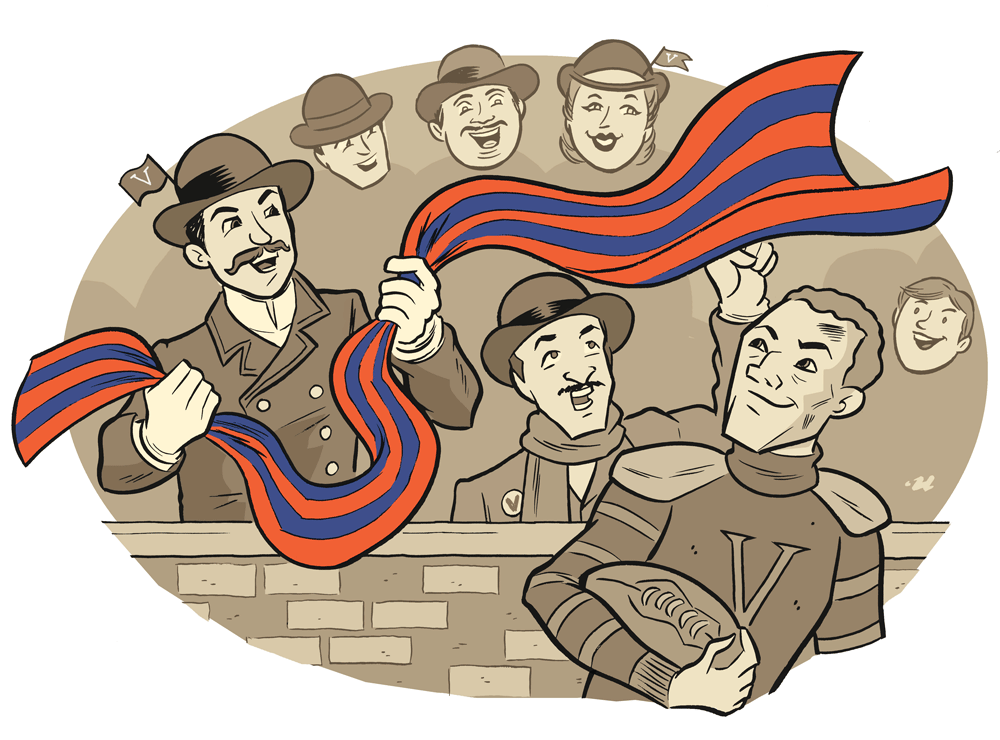1888: The Origins of Orange and Blue

For decades, the scarf that inspired the University’s orange-and-blue colors appeared to have been lost in the fog of history. But during research for the documentary film Wahoowa: The History of Virginia Cavalier Football, writer and director Kevin Edds (Col ’95) picked up the trail of the almost mythical “handkerchief” described in the College Topics article (below).
Allen Potts, the owner of the scarf and a UVA track, football and baseball star, proved to be the central clue in Edds’ treasure hunt. By tracing the Potts family tree, Edds located Potts’ great-granddaughter Jane Potts, who told him the framed scarf had been destroyed in a fire that burned his home, “Happy Creek,” to the ground. Along with the bad news, he also received some good news: The scarf had been cut in half, and a piece might still exist.
At Potts’ suggestion, Edds turned to the Virginia Historical Society. “After searching through their catalog I came across an item titled: ‘Fragment of silk boating scarf’ with a description that said ‘One half of silk boating scarf from which the colors of UVA were selected,’” says Edds. “This was it—the ‘Holy Grail’ of UVA football!
“It was fascinating to see this piece of history that very few people even know still exists. I could imagine how this scarf was waved in the air, forever changing the look of athletes and fans who wore these colors.”
The scarf can be seen in Edds’ documentary, which debuted at this November’s Virginia Film Festival. For more information, visit www.UVaFootballHistory.com.
In the fall of 1888 there was a mass meeting called in the old Public Hall, in the annex to the Rotunda, for the purpose of changing the University colors. Up to that time the colors had been silver grey and cardinal red, intending to represent the grey of the Confederacy, dyed in blood. These colors had been in use for a number of years and had won their way into the affections of many old students. The reasons for desiring a change were the unsuitableness of the grey and red for athletic uniforms and the difficulty of obtaining red dye for the desired tint that would not fade. Mr. Allen Potts, one of the University’s earliest athletic heroes, had attended the meeting in his football clothes, being on his way to the field for the afternoon’s practice. He had rolled about his neck a very large silk handkerchief, striped navy blue and orange. Some student sitting behind him reached over and pulled the handkerchief from his neck and waving it yelled, ‘How will these colors do?’ This seemed to take the fancy of the crowd and orange and blue were chosen without opposition. The handkerchief was really a waist handkerchief that the English college men used at that time instead of a belt. Mr. Potts had obtained it the summer before in Oxford with a lot of boating clothes. He still has the handkerchief framed and hung up in his room at Castle Hill, Va.
—College Topics (1904)